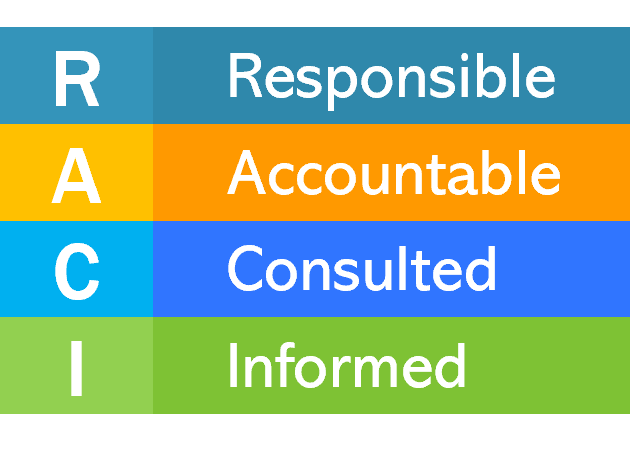How does the assessment work?
As a first step, once you have purchased the service, you define the activities or processes for which you want to assess the clarity of roles and responsibilities.
Next, you invite various participants, usually employees of the organisation who are involved in these activities. They state who they consider to be the responsible (R in the RACI) and those accountable (A in the RACI) for each activity.
You can then compare the results. You can see if everyone has the same understanding. It's not uncommon for different managers to be named for the same activity when there should only be one: this is unclear and can create inefficiencies in your organisation.
With this Wevalgo service, you can check the clarity of roles and responsibilities in very concrete terms. This is far more powerful than a survey-type questionnaire that asks whether roles and responsibilities are clear in general, or even in one area.
This way you know exactly which responsibilities to clarify for which roles.
What is the RACI?
The RACI matrix, or RACI chart is a methodology that helps to define and assign clear roles and responsibilities for each task or activity within an organisation. It is a matrix that determines who is responsible for what, who needs to be consulted, who needs to be informed, and who is ultimately responsible, ensuring that nothing is forgotten.

- R (Responsible): The people or groups who carry out the work. They are responsible for carrying out the specific task or decision.
- A (Acccountable): This person is ultimately responsible for the task or decision. He or she has the final say and is the one who must be held to account if anything goes wrong.
- C (Consulted): These are the people or groups whose opinions are sought before the decision is made or the task is carried out. They can contribute their expertise or knowledge, but are not responsible for carrying out the task.
- I (Informed): These are the people or groups who need to be informed about the progress or results of a task or decision. They are not directly involved in the execution of the task, but must be kept informed of its progress.
Some fun about RACI
A humorous story illustrates the importance of clear roles and responsibilities.
There were four people named Everybody, Somebody, Anybody and Nobody. There was an important job to be done and Everybody was asked to do it. Everybody was sure Somebody would do it. Anybody could have done it, but Nobody did it. Somebody got angry about that, because it was Everybody’s job. Everybody knew Anybody could do it but Nobody thought that Nobody would do it. It ended up that Everybody blamed Somebody when Nobody did what Anybody could have done.
Key stepsThe service can be used directly after the purchase with the steps described below.
- Customization of the service
- Definition of a title and an introduction for the participants who will log in to perform the evaluation
- Choice of activities or processes to be assessed
- Definition of the list of roles involved (or not) in these activities or processes
- Definition of participants and choice of anonymity options
- Sending an invitation link to selected participants
- Selected participants complete evaluations on the Wevalgo web platform
- Participants log in to the Wevalgo website using the link sent
- They state who they consider to be the responsible (R in the RACI) and those accountable (A in the RACI) for each activity
- You can follow the progress of the responses in real time (to re-launch if necessary)
- Results available in real time with numerous graphs and tables of results
Four types of results are provided:
- analysis of accountabilities clarity
- analysis of responsibilities clarity
- ranking of the activities by their level of accountability and responsibility clarity
- ranking of roles by number of accountabilities, with the clarity for each of the activities they are accountable of
Analysis of accountabilities clarity
The following table displays the "Role consistency" for each activity. It measures how much different people understand who is accountable of an activity. Ideally, it is 100%, meaning that everybody think that the same person is accountable of that activity, and no one else.

The role consistency is calculated as the number of times each role has been chosen as Accountable of the activity divided by the number of participants who responded.
Analysis of responsibilities clarity
The following table displays the "Role consistency" for each activity. It measures how much different people understand who are responsible for an activity. Ideally, it is 100%, meaning that everybody think that the same persons are responsible of that activity.

The role consistency is calculated as the number of times each role has been chosen as responsible of the activity divided by the number of participants who responded.
Ranking of activities
The following table displays the activities ranked by their level of accountability and responsibility clarity

The role consistency is calculated as the number of times each role has been chosen as responsible of the activity divided by the number of participants who responded.
Ranking of roles by accountability
The following table displays the roles ranked by number of accountabilities, with the clarity for each of the activities they are accountable of

The role consistency is calculated as the number of times each role has been chosen as responsible of the activity divided by the number of participants who responded.